Nestled in California’s Sierra Nevada mountains, Yosemite Park is not only known for its iconic landscapes but also as a prized haven for fishing enthusiasts. This blog post is your ultimate guide to fishing in Yosemite, from the park’s rich diversity of fish species to its top fishing hotspots. We’ll also explore the best seasons for fishing, guide you through Yosemite’s fishing regulations, licensing process, and essential gear. Whether you’re a novice angler or a seasoned fisher, this comprehensive guide is designed to enhance your fishing experience in the spectacular wilderness of Yosemite. So, let’s dive in!
Type of Fishing Experience in Yosemite
Yosemite National Park offers a diverse range of fishing experiences to satisfy any angler, from the casual hobbyist to the seasoned professional. Here’s an overview of the different fishing adventures you can enjoy in Yosemite.
Fly Fishing
Yosemite is a fly fisher’s paradise. The park’s clear, cold rivers, streams, and high mountain lakes are home to Rainbow and Brown Trout, making them excellent locations for fly fishing. Places like the Tuolumne and Merced Rivers are particularly popular for fly fishing, and if you’re into backcountry fly fishing, locations like Lyell Fork offer a secluded experience. Please remember to use barbless hooks, as required by park regulations.
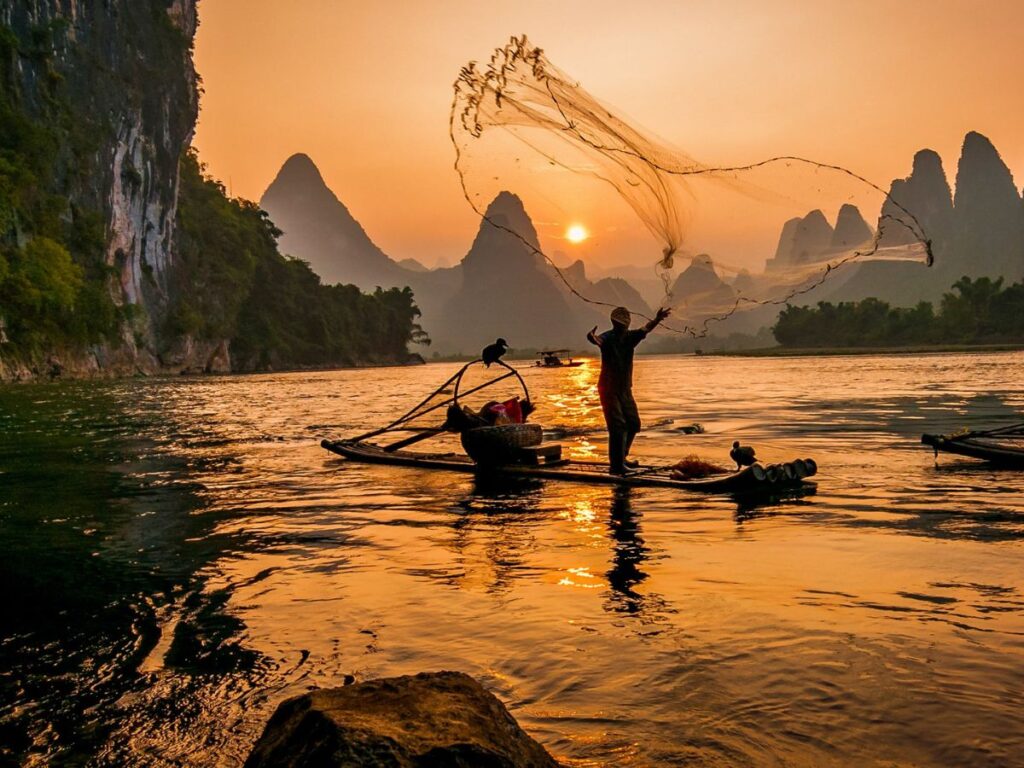
Spin Casting
For those who prefer spin casting, Yosemite offers numerous opportunities. Lower down the elevations, rivers and streams like the South Fork Merced River are perfect spots for spin casting. The rivers are populated with Rainbow and Brown Trout, while Brook Trout are more common in high-elevation lakes and streams.
High Country Fishing
If you’re up for a bit of a hike, high country fishing at Yosemite provides an unmatched experience. High-elevation lakes and streams, like those found near Tioga Pass or Gaylor Lakes, offer cooler temperatures and typically less crowded conditions. You can expect to find Rainbow and Brook Trout in these areas. The scenery is breathtaking, making the trek well worth the effort.
Fishing by Boat
On the larger lakes in Yosemite, such as Tenaya Lake and Lake Eleanor, boat fishing is a popular activity. This method allows you to reach deeper waters where larger fish like Brown Trout might be lurking. Boating on these lakes offers a different perspective of the park’s stunning landscape.
Catch and Release Fishing
Given the emphasis on conservation within Yosemite, catch and release fishing is encouraged throughout the park, particularly in areas populated with native species. This method is especially common in fly fishing and helps to ensure the sustainability of fish populations for future generations of anglers.

Fish Species in Yosemite
If you’re wondering what kind of aquatic company you’ll be keeping in Yosemite’s pristine waters, you’re in for a pleasant surprise. The park is a treasure trove of diverse fish species, each with unique characteristics that make fishing in Yosemite an exciting adventure.
Rainbow Trout: First off, we have the ever-popular Rainbow Trout, known for the beautiful color spectrum shimmering along their bodies. They have a streamlined shape and are generally blue-green or yellow-green with a pink streak along their sides. A fun fact about these beauties: their diet mainly consists of small insects, making them a delight for fly fishers. You’ll often find them in Yosemite’s colder waters, specifically in rivers and large streams.
Brown Trout: Next up is the Brown Trout. As the name suggests, these fish flaunt a brownish hue with yellowish bellies. They are larger and, often, craftier than their rainbow counterparts, providing an exciting challenge for anglers. Their food preferences lean towards insects, small fish, and crustaceans. Brown Trout prefer cooler water temperatures, and they’ve made a comfortable home in many of Yosemite’s rivers and lakes.
Brook Trout: Last but not least, we have the Brook Trout, easily identifiable by their dark green bodies decorated with a unique pattern of “worm-like” markings. These fish are comparatively smaller, making them perfect for a light tackle. Their diet includes insects, smaller fish, and even amphibians. You’ll likely find Brook Trout in cold, clear, oxygen-rich streams and lakes.
Golden Trout: The California state fish, Golden Trout, is native to California and prized by anglers for its striking golden hue and bright red stripes. These fish are often found in high elevation streams and lakes. They primarily feed on insects and are known for their cautious behavior, which presents an enjoyable challenge for fishing enthusiasts.
Mountain Whitefish: Mountain Whitefish are native to the Sierra Nevada and can be found in many of Yosemite’s rivers and streams. They are slender, silver fish that prefer cold, clear water. These fish are bottom feeders, mostly consuming aquatic insects, small crustaceans, and fish eggs.
Sacramento Sucker: The Sacramento Sucker is a native fish species found in the lower elevation streams of Yosemite. It has a torpedo-shaped body and a sucker-like mouth, hence the name. They feed primarily on algae and other plant material found on river and stream beds.
Best Hot Spots to Fish in Yosemite
If Yosemite is an angler’s paradise, then its top fishing spots are the shining gems in its crown. From serene lakes to meandering rivers, the park offers a multitude of idyllic locations teeming with fish. Let’s explore some of the best hot spots where you can cast your line and reel in the big one!
Merced River: Flowing majestically through Yosemite Valley, the Merced River is a favorite among anglers. With Rainbow and Brown Trout aplenty, it’s a promising spot for your fishing adventure. Notable for its stunning backdrop of granite cliffs and lush meadows, the Merced offers an incomparable fishing experience. Remember, the river’s water levels fluctuate with seasons, so always check current conditions.
Tuolumne River: Located in the high country, the Tuolumne River is renowned for its excellent trout fishing. Here, you can hook Rainbow, Brown, and the native Brook Trout. Surrounded by alpine meadows and granite peaks, fishing here feels like a scene straight out of a postcard. The river can be fast-flowing, so it’s best suited for experienced anglers.
Tenaya Lake: Nestled at an elevation of 8,150 feet, Tenaya Lake is another gem. With crystal-clear waters, it’s home to Rainbow and Brown Trout. The lake’s unique feature is its accessibility—easily reached by car, it’s a favorite among those looking for convenience without compromising on the view.
Yosemite Valley: In the heart of Yosemite Park, the valley’s rivers and streams offer abundant fishing opportunities. Look forward to catching Brown and Rainbow Trout while being surrounded by world-famous landmarks such as El Capitan and Half Dome. Fishing in Yosemite Valley is truly an unforgettable experience.
Lower Merced River: The Lower Merced River, particularly downstream from Yosemite Valley, is renowned for its Brown and Rainbow Trout fishing. Ideal during early spring or late fall, its lower elevation means warmer conditions than higher reaches. Besides the natural beauty, fishing here is enjoyable because of its less crowded atmosphere. For a quieter, tranquil experience, this is a top choice.
Mirror Lake: Mirror Lake, despite being seasonal, is a standout fishing spot in Yosemite Valley. Rich with Rainbow and Brown Trout, the best fishing times coincide with its peak in spring and early summer. The lake’s scenic reflection of surrounding cliffs creates a serene ambiance, making for a unique fishing experience.
Tioga Lake: Located just beyond Yosemite’s eastern entrance, Tioga Lake offers a serene retreat with high-altitude beauty. Its crystal-clear waters are home to Brook and Rainbow Trout, providing a refreshing summer fishing escape. Surrounded by towering mountain peaks, its captivating vistas add to the experience.
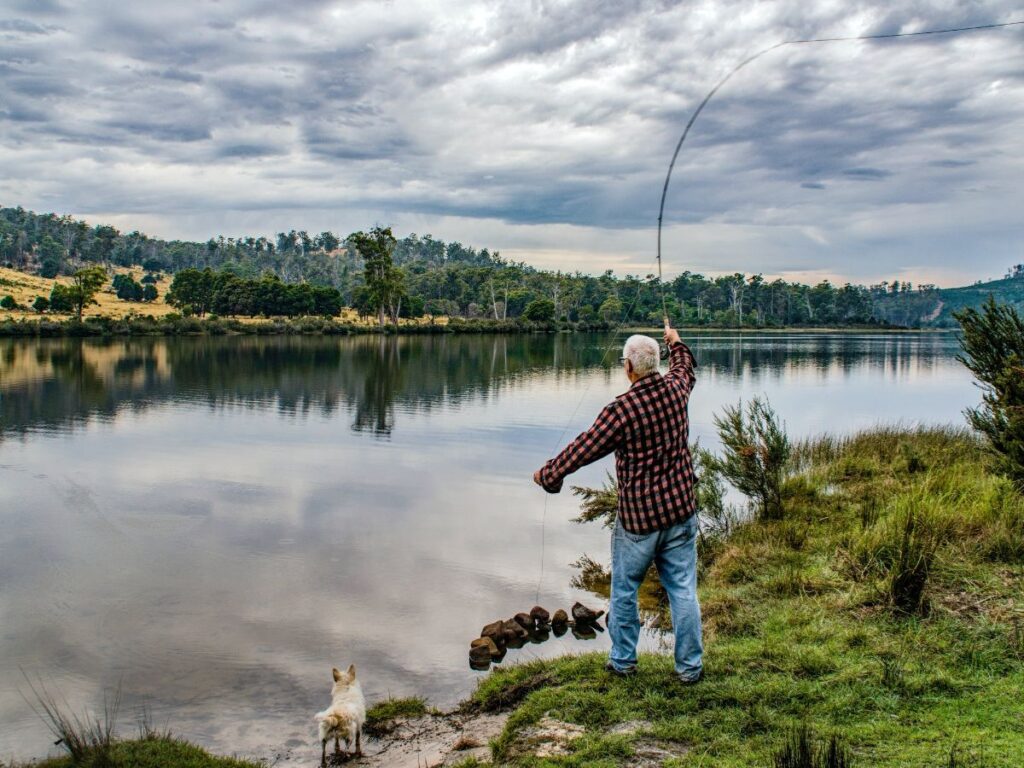
High Sierra Camp Loop: The High Sierra Camp Loop trails through various lakes and streams, each one teeming with Brook and Rainbow Trout. The area is remote and rugged, which means a bit of a hike, but the payoff is high. If you’re an adventurous angler who appreciates breathtaking alpine views, this is your spot.
Hetch Hetchy Reservoir: While its primary purpose is to supply water to San Francisco, Hetch Hetchy Reservoir also doubles as a fishing haven. Populated by Rainbow Trout and feisty Smallmouth Bass, it’s a unique Yosemite fishing locale. With colossal rock formations and a towering waterfall, the views here are nothing short of spectacular.
Cathedral Lakes: The Cathedral Lakes are tucked away along the John Muir Trail, high in Yosemite’s wilderness. Home to Brook and Rainbow Trout, these lakes offer an off-the-beaten-path fishing experience amidst towering peaks and lush alpine meadows. It requires a hike to get there, but the tranquil surroundings make it worthwhile.
Cherry Lake: Positioned on Yosemite’s western boundary, Cherry Lake is a hidden gem. This spacious lake offers fantastic opportunities for Brown Trout and some Rainbows. The area is less trafficked than other spots, providing a peaceful ambiance. Plus, it’s near multiple campgrounds, perfect for anglers planning a multi-day trip.
Dana Fork Tuolumne River: Dana Fork is a paradise for fly-fishers, thanks to its shallow, clear water. Primarily known for its Brook Trout, the area combines tranquility with the thrill of fishing. Situated at high elevation, the air here is crisp, and the surrounding scenery is stunning.
Ellery Lake: Close to Yosemite’s Tioga Pass entrance, Ellery Lake is a fishing spot that shines with scenic beauty. Offering both Rainbow and Brown Trout, the picturesque mountain landscape surrounding the lake sets an inspiring backdrop for a fruitful day of fishing.
Dog Lake: Just a short hike away from Tuolumne Meadows, Dog Lake provides a serene fishing setting. The lake is primarily home to Brook Trout and promises a peaceful experience. Its relatively easy access, combined with the surrounding alpine beauty, makes it a fantastic option for both novice and seasoned anglers.
Bridalveil Creek: An idyllic setting for fly fishermen, Bridalveil Creek is populated with small Brook and Rainbow Trout. Nestled close to the thundering Bridalveil Falls, it provides a unique fishing experience combined with one of Yosemite’s spectacular vistas. The peaceful environment and less crowded nature make it an angler’s haven.
Lyell Fork: Less known but equally enchanting, Lyell Fork of the Tuolumne River offers an extraordinary fly fishing experience. With Brook and Rainbow Trout in abundance in its clear, cold waters, it’s an angler’s delight. Framed by towering peaks and lush alpine meadows, Lyell Fork offers a sense of seclusion and wilderness that’s rare.
Frog Creek: Located near Lake Eleanor, Frog Creek is a great spot, especially during early trout season. It’s a prime spot for Rainbow and Brown Trout. The creek’s secluded setting ensures a peaceful fishing experience, making it perfect for those seeking solitude with their catch.
Gaylor Lakes: The high-altitude Gaylor Lakes require a bit of a climb but reward with Brook and Rainbow Trout amid a spectacular alpine setting. With Gaylor Peak and the expansive granite landscape providing the backdrop, the location offers both a physical and visual treat.
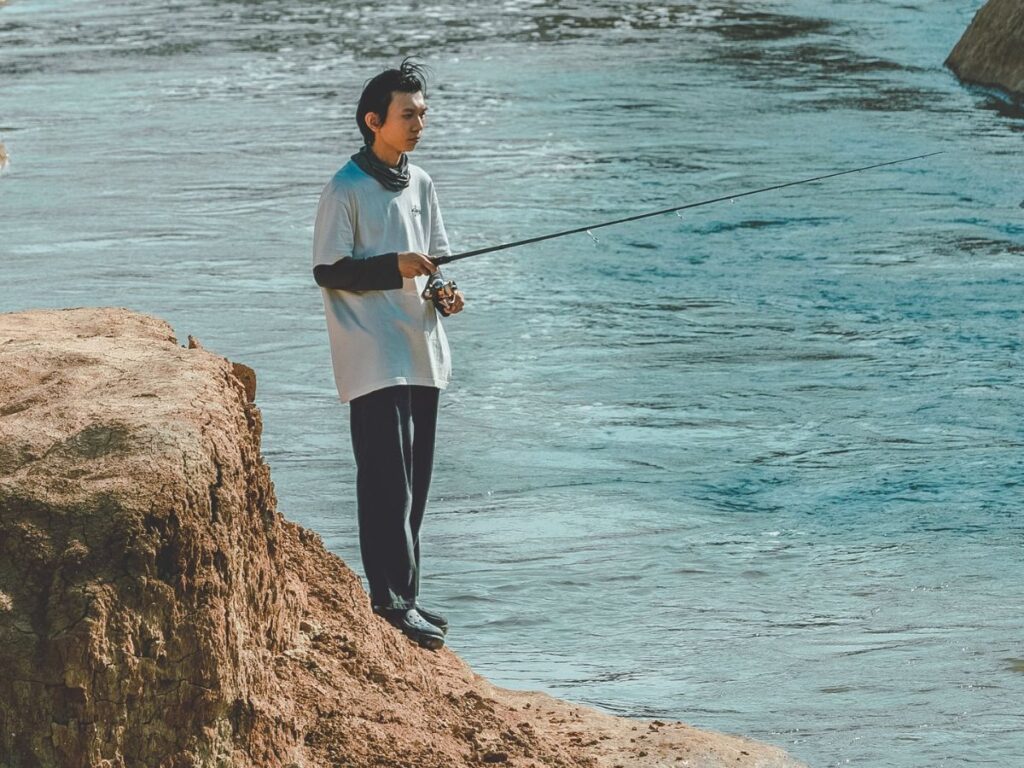
Porcupine Flat: Porcupine Flat is a gateway to various creeks populated with Rainbow and Brook Trout. This spot offers a chance for a great catch and an escape from the usual crowds. If a back-to-nature experience is what you’re after, Porcupine Flat offers just that.
O’Shaughnessy Dam: Situated at Hetch Hetchy, the O’Shaughnessy Dam area offers a unique fishing setting. Here, you’ll find Rainbow Trout and Smallmouth Bass. The massive dam structure and the wide reservoir form an impressive landscape that adds to the overall fishing experience.
Chilnualna Falls: Around Chilnualna Falls, the creeks and pools are a go-to for Brown and Rainbow Trout fishing. The falls provide a constant soothing background sound, and the panoramic view of cascading water adds an element of thrill to your fishing endeavor.
Tamarack Creek: Tamarack Creek, located near Crane Flat, is a hidden gem for Brown and Rainbow Trout fishing. The smaller waterway is a picturesque spot surrounded by a dense forest canopy. It’s ideal for those seeking solitude and a peaceful fishing trip.
Middle Fork San Joaquin River: Found near Yosemite’s southern boundary, this river offers a remote wilderness fishing experience with plentiful Rainbow and Brown Trout. If you’re a serious angler seeking an off-beat experience, the Middle Fork of the San Joaquin River is a must-visit.
Little Yosemite Valley: The Merced River in Little Yosemite Valley is a popular spot to hook Brown and Rainbow Trout. Providing a beautiful yet less crowded alternative to the main Yosemite Valley, it assures a peaceful fishing experience set against a scenic backdrop.
Best Season to Fish in Yosemite
Fishing in Yosemite National Park is a seasonal affair, with each season offering a unique angling experience. However, the window to fish is quite broad, typically running from the last Saturday in April through November 15 each year. It’s essential to check for any current restrictions before you go, as dates and rules can change based on environmental conditions.
Spring: Springtime (April to June) is arguably the best time to fish in Yosemite. As the weather starts to warm up, the fish begin to become more active. The snowmelt feeds the rivers, lakes, and streams, providing a fresh flow of water that draws fish to the surface. Rainbow Trout, in particular, are plentiful during this time. However, keep in mind that some high-altitude lakes might still be frozen in early spring.
Summer: Summer (June to August) offers longer days and warmer weather, which can make for enjoyable fishing conditions. The high country’s waters (like Tuolumne Meadows) become more accessible as the snow melts away, and you’ll find Rainbow and Brook Trout actively feeding, especially in early mornings and late evenings. Summer also brings an influx of tourists, so for a quieter experience, consider fishing on weekdays or in less popular spots.
Fall: The fall season (September to November) brings its own charm to fishing in Yosemite. As the weather cools, fish like Brown Trout start their spawning runs, making them more aggressive and easier to catch. Also, fewer people are in the park during fall, providing a peaceful and quiet fishing experience. Remember that the fishing season ends on November 15, so plan your trip accordingly.
Winter: While Yosemite’s official fishing season doesn’t include winter, this time of year brings a quiet beauty to the park. Some of the lower elevation, year-round rivers and streams outside of the park boundaries may still hold opportunities for catch-and-release fishing for Rainbow and Brown Trout. Always ensure you’re aware of the specific regulations for the area you’re exploring.
Fishing Regulations in Yosemite
If you’re planning to fish in Yosemite National Park, it’s essential to familiarize yourself with the park’s specific fishing regulations. These rules not only protect the local fish populations but also contribute to the broader efforts of conservation within the park.
Fishing Season
The general fishing season in Yosemite runs from the last Saturday in April through November 15, during daylight hours only. It’s essential to note that some areas have different fishing seasons, and these can change, so it’s best to check the park’s official website or consult with park rangers before your trip.
Catch Limits and Size Restrictions
In Yosemite, you can catch and keep up to five fish per day, with a total possession limit of ten. However, there’s a specific regulation for Rainbow Trout in the Merced River from Happy Isles to Foresta Bridge, where the limit is catch-and-release only. There are no size restrictions for non-native fish species.
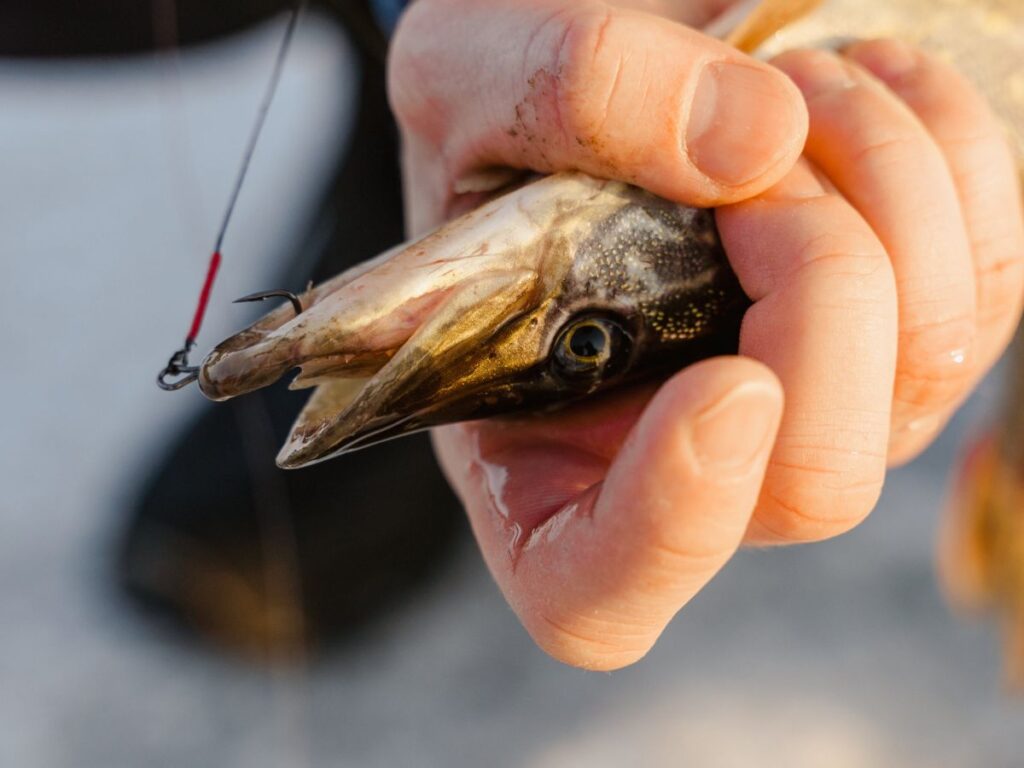
Equipment and Bait
While you can use any legal California fishing method in the park, the use of lead tackle is prohibited due to its potential harm to wildlife. Also, barbless hooks are required when fly fishing. Live or dead minnows and other bait fish, amphibians, non-preserved fish eggs, and roe are not allowed as bait.
Fishing Locations
While most bodies of water in Yosemite allow fishing, there are a few exceptions. These include Frog Creek near Lake Eleanor (from April 15 through June 15), Dana Fork of the Tuolumne River, and others. Be sure to review the park’s official fishing regulations for a complete list of non-fishing areas.
Conservation Efforts
The reason for these regulations is rooted in conservation. Yosemite is home to several native and non-native fish species, and the goal is to protect native species and their habitats. Fishing regulations ensure sustainable fishing practices, which helps maintain the balance of the ecosystem and allows future generations to enjoy the unique experience of fishing in Yosemite.
Licensing for Fishing in Yosemite
Before casting your line in the beautiful waters of Yosemite National Park, it’s crucial to have the necessary licensing. Fishing within Yosemite requires a valid California fishing license for everyone aged 16 and older. Here’s a brief guide on how to get licensed and embark on your Yosemite fishing adventure.
Licensing Requirements
In Yosemite, all anglers aged 16 and above must possess a valid California fishing license, regardless of whether you plan on catch-and-release or keep a few fish. The park does not sell fishing licenses, so you’ll need to purchase one before your visit. Remember, licenses are mandatory regardless of the fishing method used – this includes fly fishing, spin casting, or any other legal method.
Obtaining a Fishing License
Here are the steps to obtain your California fishing license:
- Determine the Type of License You Need: California offers different types of fishing licenses, including annual, short-term, sport fishing, and lifetime licenses. Pick the one that best suits your needs.
- Purchase Your License: You can purchase a fishing license online through the California Department of Fish and Wildlife’s website, or at various retail outlets such as sporting goods stores or Walmart. Remember to carry a valid ID when purchasing in person.
- Print and Carry Your License: If purchased online, you’ll need to print your license and carry it with you when fishing. For in-person purchases, keep the provided hard copy license on your person while fishing.
Fees
Fees for fishing licenses vary depending on the type and duration. An annual resident sport fishing license for 2023 costs $52.66, while a one-day sport fishing license for residents and non-residents alike is $17.02. Reduced-fee and free licenses are available for seniors, disabled individuals, and veterans under certain conditions. Prices are subject to change, so it’s recommended to check the official website for the most accurate and current fee structure.
However, a valid California fishing license is your ticket to enjoy the abundant fishing opportunities in Yosemite National Park.
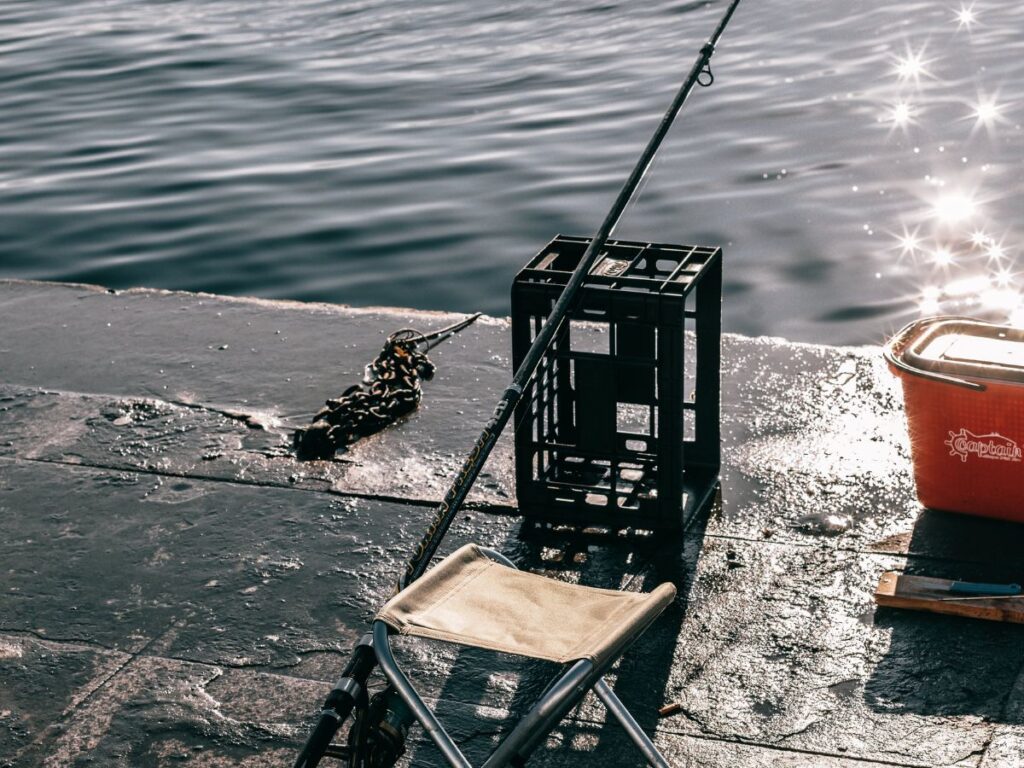
Essentials for Fishing and Gear Equipment
Whether you’re a seasoned angler or a beginner, having the right fishing gear can significantly enhance your experience at Yosemite. Let’s delve into what you’ll need for a successful fishing trip in this remarkable national park.
Basic Fishing Gear
The basics include a fishing rod and reel suitable for your chosen style of fishing. Fly fishing enthusiasts will want a quality fly rod and reel, while spin casters will need a suitable spin-casting setup. Additionally, a variety of hooks (don’t forget, barbless for fly fishing), weights, and a selection of bait or lures is a must. Remember, live or dead minnows and other non-preserved fish eggs are not allowed as bait in Yosemite.
Recommended Gear for Fishing in Yosemite
For Rainbow and Brown Trout, which are common in lower elevation rivers and streams, small spinners and spoons are effective, as are a variety of flies for the fly fishers. For Brook Trout in high-elevation lakes and streams, consider smaller, brighter lures and a variety of dry and wet flies.
A comfortable and durable fishing vest with plenty of pockets can be a great asset, as it will allow you to carry a variety of lures, hooks, and other tools. In addition, a sturdy net will help you land your fish, and a pair of long-nosed pliers can be useful for removing hooks. Depending on the season, you might want to consider a quality rain jacket or even waders.
Where to Get Your Gear
While there are several locations to purchase fishing gear in and around Yosemite, please remember that the park itself does not sell fishing licenses or much gear. In nearby towns such as Mariposa and Oakhurst, you’ll find sporting goods stores that carry a wide selection of fishing equipment. There are also numerous online retailers where you can order your gear in advance. For those who prefer not to invest in their own equipment, or simply want to try out fishing in Yosemite without a big upfront cost, there are rental options available. In Yosemite Valley, Yosemite Village Sport Shop offers a limited selection of fishing gear for rent.
Tips and Tricks for a Successful Fishing Experience in Yosemite
Whether you’re an experienced angler or just beginning your fishing journey, everyone can use a few tips and tricks to help their line sing. Here are some practical insights to make your fishing experience in Yosemite as successful and enjoyable as possible.
For Novice Anglers
- Before you head out, familiarize yourself with the basic techniques of casting and reeling in, whether you’re fly fishing or spin casting. There are plenty of online resources and tutorials to help you get started.
- Don’t worry about having a wide variety of lures and baits at first. A few basics will suffice until you learn what works best in Yosemite’s waters.
- Fishing is as much about enjoying the process and the surroundings as it is about catching fish. Don’t be discouraged if you don’t catch anything right away.
For Experienced Anglers
- Yosemite’s waters range from fast-moving rivers to still alpine lakes. Tailor your approach and gear according to where you’re fishing.
- The best bait or lure often depends on the season. For instance, during the spring runoff, try using high-visibility lures.
- Barbless hooks cause less damage to fish, making them ideal for the park’s catch-and-release areas.
Expert Suggestions
- Fish tend to be most active early in the morning or late in the evening. Plan your fishing times accordingly.
- Fish are sensitive to changes in weather and barometric pressure. Overcast days can often lead to more bites.
- Don’t be shy about chatting with park rangers or local anglers. They often have the best insights about where the fish are biting and what they’re taking.
Key Takeaways
- License: Anyone over 16 needs a California fishing license.
- Season: Prime fishing is late April through mid-November.
- Species: Diverse fish like brown, rainbow and brook trout, and mountain whitefish.
- Hot Spots: Locations like Tuolumne Meadows, Tenaya Lake, and the Merced River.
- Regulations: Adhere to fishing regulations for Yosemite’s ecosystem.
- Gear: Right equipment enhances the fishing experience.
- Accessibility: Fishing spots available for individuals with disabilities.
FAQs
- Do I need a license for Yosemite fishing?
Yes, if you’re 16 or older, you need a valid California fishing license.
2. When’s the best fishing season in Yosemite
Fishing season generally runs from the last Saturday in April through mid-November. However, peak season is often in the summer months.
3. Any top fishing spots in Yosemite
Yes, some popular spots include Tuolumne Meadows, Tenaya Lake, and the Merced River.
4. What if I fish without a license in Yosemite
Fishing without a license can result in fines and penalties as per California state law.
5. What’s the catch limit per species in Yosemite
The catch limit varies by species and location. For example, five trout per day is generally the limit but some locations have special regulations.
6. Can I fish throughout the year in Yosemite
No, fishing is typically allowed from the last Saturday in April through mid-November only.
7. What’s the best weather for fishing in Yosemite
Fish are usually more active on overcast days or during cooler times of the day such as early morning or late evening.
8. Can kids fish in Yosemite? Do they need a license
Yes, kids can fish in Yosemite. A license is only required for those 16 or older.
9. Is boat fishing allowed in Yosemite’s lakes
Yes, non-motorized boats can be used on several of Yosemite’s lakes, but not on rivers or streams.
10. Any fishing spots in Yosemite suitable for disabled people
Yes, there are several accessible fishing areas, including the Yosemite Valley, Hetch Hetchy, and Wawona areas.
Extra Scoop For You!
- Official Website of Yosemite National Park: https://yosemite.org/
- Contact Details
- Phone: 209/372-0200
For those of you who are intrigued about fishing, we have some extra reading material recommendations for you. Discover the enchanting world of fish with these popular books:
- Trout Culture by Jen Corrine Brown
- 52 Rivers: A Woman’s Fly-fishing Journey by Shelley Walchak
- The Earth is Enough: Growing Up in a World of Flyfishing, Trout, & Old Men by Harry Middleton
